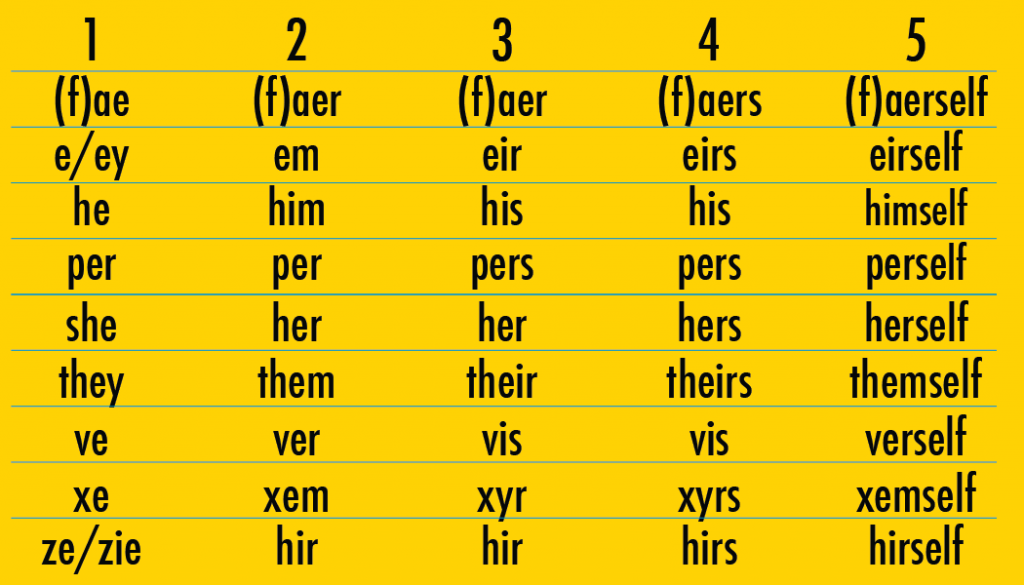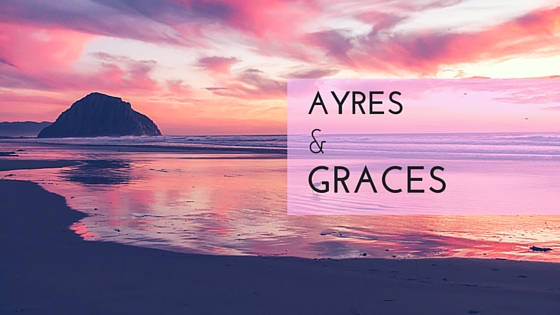Pronouns seem to be getting a lot of attention for something that on the surface seems like it should be straight (ha!) forward. So if you’re writing a story about trans, non-binary, or genderqueer people, how do you know which pronouns to use? How do you let your reader know these characters’ identities without bopping them over the head with a grammar lesson?
It sounds like it should be easy, but things can get confusing if you’re unfamiliar with non cis-gendered people and how they prefer to be addressed. But not to worry, it’s very simple to know which pronouns to use for your character.
You use their correct pronouns. If your race of genderless aliens uses three different pronouns depending on social status and not gender, then you have to work those pronouns into the narrative. Your average reader is not stupid; they will get it.
Below is a list of ways you can show, and tell, your reader which gender—if any—your character identifies with (taken from Going Over the Rainbow: Pronouns and Cons).
- If a character’s gender is in question, have other characters comment on or think about it. This is perfectly alright. If the character is a viewpoint character it is just fine to let them think about it. Our gender identity and expression are a large part of how we socialize.
- Let your character come right out and confirm their gender. This is best done in dialog with other characters, though depending on the story there are other ways to approach this as well.
- Have other characters comment on their gender expression. Non-binary, trans and genderqueer people are beset with misunderstanding and misgendering on a daily basis, so it’s likely they will encounter this in your narrative.*
- They can ask to be called by their correct pronouns or inform other characters of their correct pronouns.
- Use description to show their gender expression. This one is a bit trickier and can come off as being transphobic and othering. Here is a good example of how to handle it without going overboard:
I was living in Vancouver’s West End, still wet behind the ears, having just arrived from the Yukon in a Volkswagen van. It was only the second apartment I ever rented, and the first time I laid eyes on Rosie it was raining, and there she was, skinny, wiry, restless-eyed Rosie right behind me on the sidewalk that led to our building’s front door with bother her arms burdened down with grocery bags. So I held the door open for her, just like my gran had taught me to.
“Chivalry lives,” she snorted as she clunked in past me in her skin-tight Levi’s and low-cut blouse and kitten heels. Of course I did not know the words for kitten heels. Yet.
Except her voice was low, like an eighteen-wheeler gearing down with its engine brakes grinding on a long steep hill down from the summit, and her bare skin above her black bra was covered in five o’clock shadow and painted with now bleeding-edged and sailor-flash faded tattoos.
I had never met any other woman quite like Rosie before.
—Gender Failure by Rae Spoon & Ivan E Coyote
The description of Rosie is vivid, but there is no mistaking that the narrator sees her as a woman. A little later in the story, the narrator makes the mistake of calling her “he”. Rosie is quick to correct them. Other than that, the fact that Rosie is trans is never really discussed. She is Rosie.
You can choose to create your own pronouns for your genderless or multi-gender races, but you don’t have to. Singular they is perfectly acceptable. There are also several accepted genderless pronouns. The only issue with the list below is that they are not very well known outside the genderqueer community. Using them can draw your reader out of the story as they try to parse the new words, but just like any other new information, it just requires a little effort on your part to weave them seamlessly into the narrative.
(From the University of Wisconsin: Lesbian, Gay, Bisexual, Transgender Resource Center).
Please do not be afraid to let your character use these pronouns. They’ll never enter wider use if we don’t actually use them.
As with all orientations and identities, we must keep in mind that we are writing people. Which pronouns they prefer is a good clue to who they are and how they see themselves, but we must remember not to beat our reader over the head with this detail. It’s just another facet of who your character is as a person.
Ideally, your character’s gender should not be a major source of characterization. Relying on gender expression and society’s gender expectations to show character perpetuates and reinforces these stereotypes. It is just fine to let gender be addressed, but a light hand usually works best. Treat it like backstory: leave it to a sentence or two here and there. The reader will do the rest.
Is there anything you feel I’ve left out? How would you handle writing a non-binary, trans or genderqueer character? Have you ever written one? If you haven’t, would you consider it?
Bran is the author of The Jeweled Dagger, Masquerade, The Silver Peacock series, Savior and the free-to-read Corsair and Corsetteer series. They live in a little house in Southern Missouri with their three nerdlings, one aging dachshund, and four cats. You can find Bran on Tumblr, Twitter, Facebook, Patreon, Instagram, Pinterest and their website branlindyayres.com.
*Sadly, in many instances (especially for non-white trans women) this situation is deadly. Please be careful how you approach this so that you’re not accidentally promoting transphobia. The only exception would be if you are writing a transphobic character.



